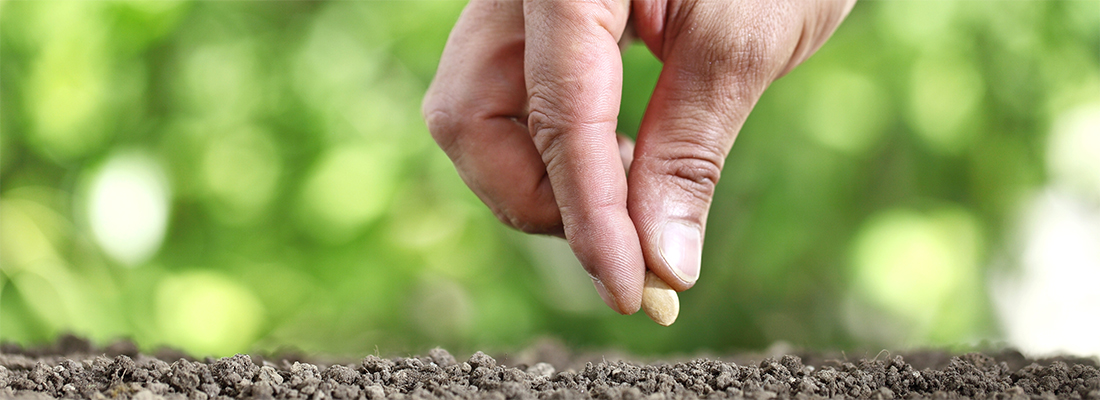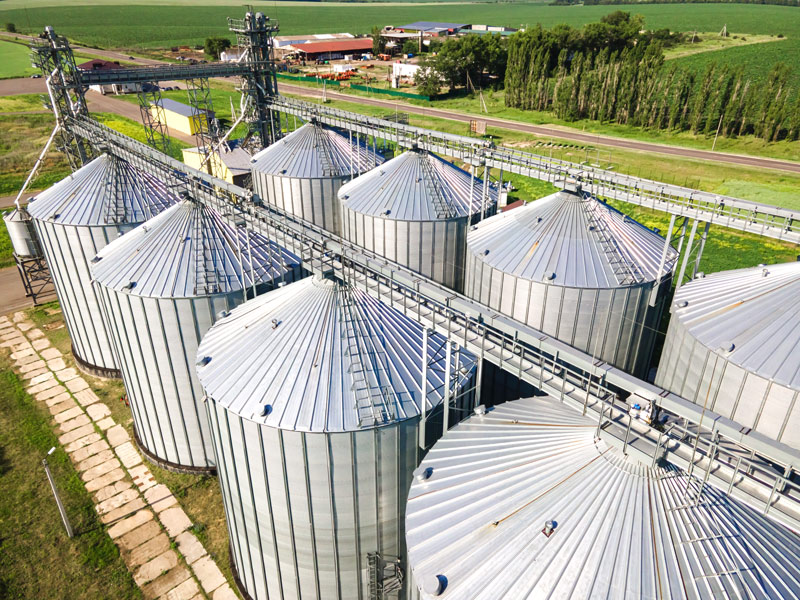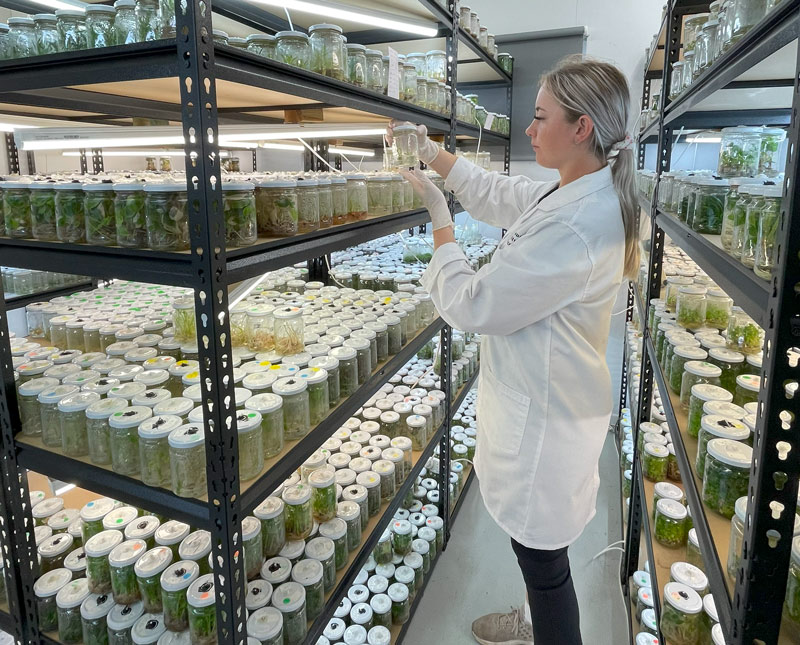Info, Knowledge Base
How to Freeze Dry Seeds with the CryoDry CD8 Freeze Dryer

Lyophilization, commonly known as freeze drying, stands as a pivotal process crucial for safeguarding the viability and longevity of seeds. Through the innovative CryoDry CD8 freeze dryer, an advanced and efficient solution emerges for seed preservation, ensuring sustained viability of genetic material over extended periods. Noteworthy in this context is the pioneering work of Joseph Simkin, who in 1974 patented the technique of Freeze Drying of Seeds (US Patent 3,950,892), offering a detailed blueprint for enhancing seed viability and storage lifespan. Emphasising precision and cost-effectiveness, the CryoDry CD8 stands out for its ability to meticulously control the freeze-drying process, making it a compelling choice for seed preservation endeavours.
Understanding Freeze Drying
Freeze drying involves three main stages: freezing, primary drying (sublimation), and secondary drying (desorption).
- Freezing: Seeds are first frozen to a very low temperature. This crystallizes the water content within the seeds.
- Primary Drying: Under low pressure, ice crystals within the seeds sublimate, turning directly from solid to vapor, without passing through a liquid phase. This removes the bulk of the water content.
- Secondary Drying: Remaining water molecules are removed by gradually increasing the temperature, reducing the residual moisture to optimal levels for preservation.
Advantages of Freeze Drying Seeds
- Extended Shelf Life: Freeze-dried seeds can be stored for decades without losing viability, crucial for preserving biodiversity and ensuring food security.
- Maintenance of Genetic Integrity: The process minimizes damage to the seeds’ genetic material, ensuring they remain genetically intact.
- Space Efficiency: Reduced moisture content leads to decreased seed volume and weight, facilitating easier storage and transportation.
The CryoDry CD8 Freeze Dryer
The CryoDry CD8 Freeze Dryer is a state-of-the-art freeze dryer designed for efficient and reliable freeze drying of biological materials, including seeds. Key features include:
- Advanced Control Systems: Precise control over temperature, pressure, and drying rates ensures optimal conditions for seed preservation.
- Capacity and Flexibility: The CD8 accommodates various seed types and batch sizes, making it versatile for different preservation needs.
- Efficiency and Consistency: High throughput and uniform drying ensure consistent results across different batches of seeds.
- AutoDry: The program uses an advanced algorithm to determine drying progress. It automatically adapts drying parameters and identifies process end. The new and innovative autodry mode is perfect for beginners or users who do not want to setup their own drying programs.
Process of Freeze Drying Seeds with the CryoDry CD8
The process described by Joseph Simkin in his patent “Freeze Drying of Seeds” (US 3,950,892) outlines a comprehensive method for freeze drying seeds that can be effectively implemented using the CryoDry CD8. The key steps include:
- Preparation: Seeds are cleaned and, if necessary, pre-treated to ensure uniform freezing and drying.
- Loading: Seeds are placed in the CD8’s drying chamber. Proper spacing ensures even exposure to freezing and drying conditions.
- Freezing Stage: The CD8 lowers the temperature rapidly, freezing the seeds and forming ice crystals within. This step aligns with Simkin’s method, which emphasizes controlled freezing to avoid cellular damage.
- Primary Drying Stage: The chamber pressure is reduced, and the temperature is carefully controlled to facilitate sublimation of the ice, as detailed in Simkin’s patent.
- Secondary Drying Stage: The temperature is gradually increased to remove any remaining water molecules, achieving the desired low moisture content. This step is crucial for minimizing metabolic activity and degradation over time.
- Unloading and Storage: Once the process is complete, seeds are removed and packaged in moisture-proof containers for long-term storage.

Practical Applications
- Agricultural Research: Freeze drying seeds plays a vital role in agricultural research by preserving the genetic material of various crop species. Researchers and breeders rely on seed banks equipped with freeze-drying capabilities to safeguard valuable genetic resources. These preserved seeds serve as a repository for exploring genetic diversity, identifying desirable traits, and developing new cultivars with improved yield, resistance to pests and diseases, and tolerance to environmental stresses. Additionally, freeze-dried seeds facilitate controlled experiments, allowing scientists to study the effects of different growing conditions and treatments on crop performance.
- Conservation: Freeze drying is instrumental in conservation efforts aimed at protecting endangered plant species from extinction. By storing seeds of rare and threatened plants in seed banks, conservationists create a safety net against loss of biodiversity. Freeze-dried seeds retain their viability and genetic integrity for extended periods, providing a means to reintroduce species into their native habitats or restore degraded ecosystems. Furthermore, seed banks serve as repositories for ex situ conservation, preserving plant species outside their natural range to mitigate the impacts of habitat destruction, climate change, and other threats.
- Commercial Seed Storage: In the realm of commercial seed storage, freeze drying ensures the long-term viability of seeds for agricultural producers and seed banks alike. Agricultural companies rely on freeze-dried seeds to maintain the quality and germination rates of their seed stocks, ensuring consistent crop yields and optimal performance in the field. Similarly, seed banks entrusted with the responsibility of preserving a wide array of crop varieties depend on freeze drying to extend the shelf life of seeds while retaining their genetic diversity. This enables seed banks to fulfill their role as repositories of agricultural biodiversity, supporting sustainable farming practices and food security initiatives worldwide.
- Pharmaceutical and Biotechnology Research: Freeze drying seeds has significant applications in pharmaceutical and biotechnology research. Many medicinal plants contain bioactive compounds with therapeutic potential, and preserving their seeds ensures a sustainable supply of raw materials for drug discovery and development. By freeze drying seeds, researchers can maintain the potency and stability of these bioactive compounds, enabling the production of standardized herbal medicines, nutraceuticals, and pharmaceuticals. Additionally, freeze-dried seeds serve as a valuable resource for studying plant-based remedies and exploring novel compounds for various medical applications.
- Space Agriculture and Exploration: Freeze drying seeds is essential for space agriculture and exploration initiatives aimed at sustaining human life beyond Earth. In space habitats such as space stations or future lunar and Martian colonies, resources are limited, and traditional farming methods may not be feasible. Freeze-dried seeds offer a lightweight, compact, and long-lasting solution for transporting and storing seeds in space. By preserving seeds through freeze drying, space agencies and researchers can establish self-sustaining agricultural systems, providing astronauts with fresh food, oxygen, and psychological benefits during long-duration space missions. Furthermore, freeze-dried seeds pave the way for conducting experiments on plant growth and adaptation in microgravity environments, advancing our understanding of space biology and laying the groundwork for future space exploration endeavours.

Conclusion
In conclusion, freeze drying seeds stands as a pivotal method for safeguarding the genetic diversity of plant species and securing their long-term survival. Its significance spans from conservation endeavours aimed at protecting endangered species to agricultural and horticultural pursuits focused on enhancing crop resilience and productivity. Essential to the success of freeze drying is the precise control over its parameters, a capability often lacking in traditional manifold freeze dryers. However, pioneering solutions like the CryoDry CD8 freeze dryer offer comprehensive control over the freeze-drying process at an accessible price point.
By harnessing the capabilities of the CryoDry CD8 and integrating the innovative principles outlined in Joseph Simkin’s patent, we can fortify the future of global biodiversity and food security. This entails preserving vital genetic resources for the benefit of future generations.
For further exploration into the CryoDry technology and its transformative impact on seed preservation, we invite you to reach out for more information. Contact CryoDry today to embark on a journey towards revolutionizing seed preservation practices and fostering a sustainable future for agriculture and environmental conservation.

